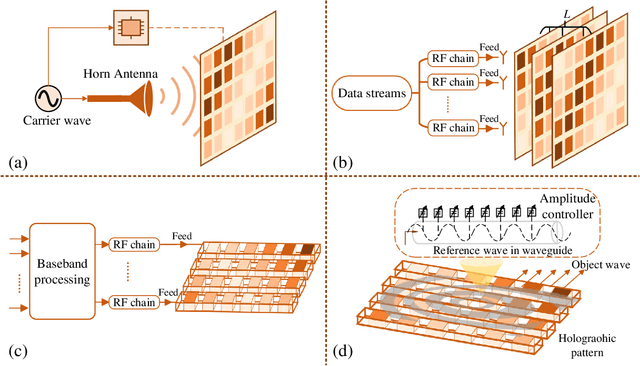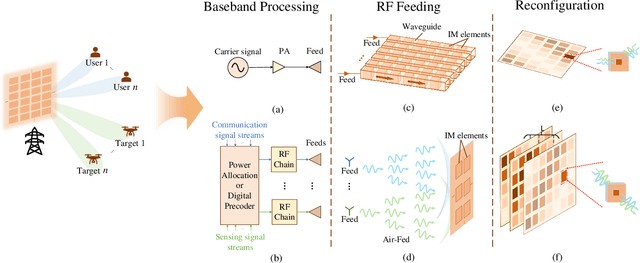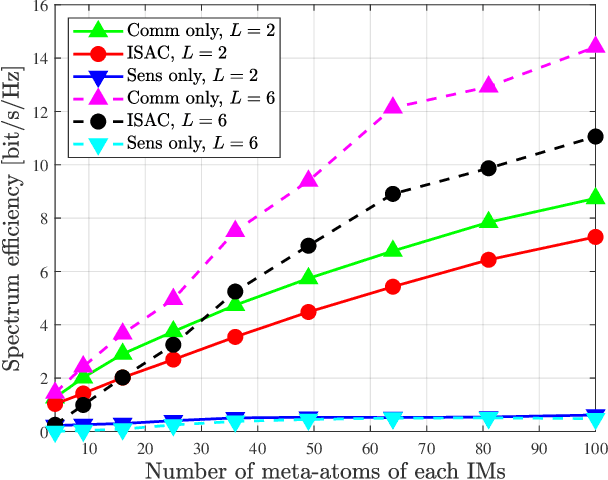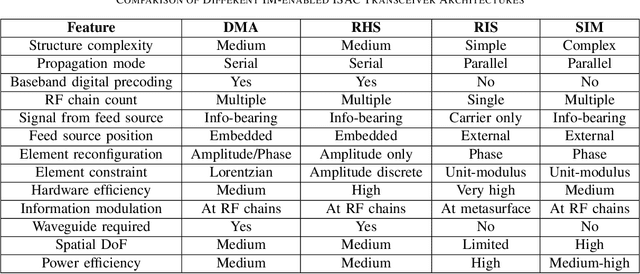Shunyu Li
NEFT: A Unified Transformer Framework for Efficient Near-Field CSI Feedback in XL-MIMO Systems
Sep 16, 2025Abstract:Extremely large-scale multiple-input multiple-output (XL-MIMO) systems, operating in the near-field region due to their massive antenna arrays, are a key enabler of next-generation wireless communications but face significant challenges in channel state information (CSI) feedback. Deep learning has emerged as a powerful tool by learning compact CSI representations for feedback. However, existing methods struggle to capture the intricate structure of near-field CSI while incurring prohibitive computational overhead on practical mobile devices. To overcome these limitations, we propose the Near-Field Efficient Feedback Transformer (NEFT) family for accurate and efficient near-field CSI feedback across diverse hardware platforms. Built on a hierarchical Vision Transformer backbone, NEFT is extended with lightweight variants to meet various deployment constraints: NEFT-Compact applies multi-level knowledge distillation (KD) to reduce complexity while maintaining accuracy, and NEFT-Hybrid and NEFT-Edge address encoder- and edge-constrained scenarios via attention-free encoding and KD. Extensive simulations show that NEFT achieves a 15--21 dB improvement in normalized mean-squared error (NMSE) over state-of-the-art methods, while NEFT-Compact and NEFT-Edge reduce total FLOPs by 25--36% with negligible accuracy loss. Moreover, NEFT-Hybrid lowers encoder-side complexity by up to 64%, enabling deployment in highly asymmetric device scenarios. These results establish NEFT as a practical and scalable solution for near-field CSI feedback in XL-MIMO systems.
Intelligent Metasurface-Enabled Integrated Sensing and Communication: Unified Framework and Key Technologies
Jun 16, 2025



Abstract:As the demand for ubiquitous connectivity and high-precision environmental awareness grows, integrated sensing and communication (ISAC) has emerged as a key technology for sixth-generation (6G) wireless networks. Intelligent metasurfaces (IMs) have also been widely adopted in ISAC scenarios due to their efficient, programmable control over electromagnetic waves. This provides a versatile solution that meets the dual-function requirements of next-generation networks. Although reconfigurable intelligent surfaces (RISs) have been extensively studied for manipulating the propagation channel between base and mobile stations, the full potential of IMs in ISAC transceiver design remains under-explored. Against this backdrop, this article explores emerging IM-enabled transceiver designs for ISAC systems. It begins with an overview of representative IM architectures, their unique principles, and their inherent advantages in EM wave manipulation. Next, a unified ISAC framework is established to systematically model the design and derivation of diverse IM-enabled transceiver structures. This lays the foundation for performance optimization, trade-offs, and analysis. The paper then discusses several critical technologies for IM-enabled ISAC transceivers, including dedicated channel modeling, effective channel estimation, tailored beamforming strategies, and dual-functional waveform design.
Transmit Beamforming Design for ISAC with Stacked Intelligent Metasurfaces
Sep 05, 2024Abstract:This paper proposes a transmit beamforming strategy for the integrated sensing and communication (ISAC) systems enabled by the novel stacked intelligent metasurface (SIM) architecture, where the base station (BS) simultaneously performs downlink communication and radar target detection via different beams. To ensure superior dual-function performance simultaneously, we design the multi-layer cascading beamformer by maximizing the sum rate of the users while optimally shaping the normalized beam pattern for detection. A dual-normalized differential gradient descent (D3) algorithm is further proposed to solve the resulting non-convex multi-objective problem (MOP), where gradient differences and dual normalization are employed to ensure a fair trade-off between communication and sensing objectives. Numerical results demonstrate the superiority of the proposed beamforming design in terms of balancing communication and sensing performance.
 Add to Chrome
Add to Chrome Add to Firefox
Add to Firefox Add to Edge
Add to Edge